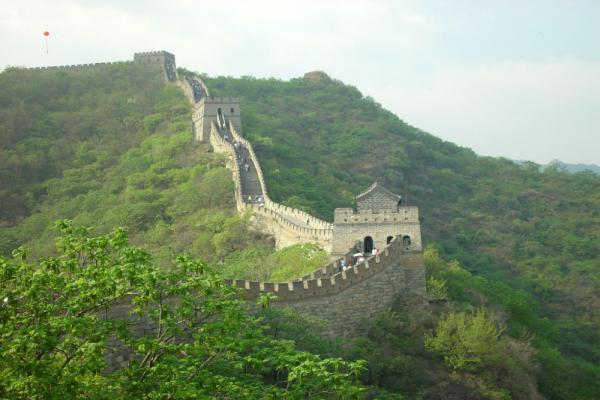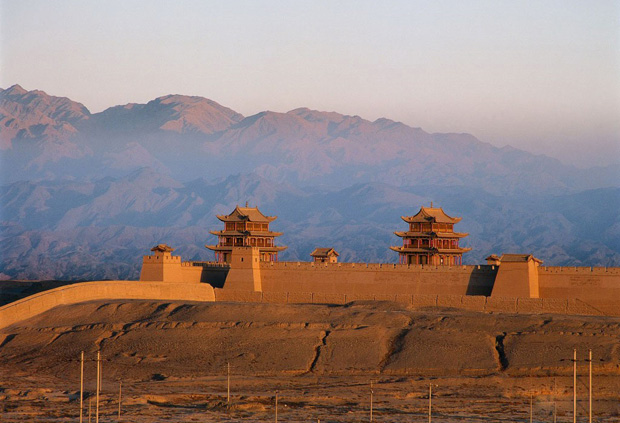Where does the Great Wall of China Start?
Due to the years of weathering and erosion, natural disasters (earthquake, flood, etc.), human-caused destruction, most of the Great Wall of China built in the early dynasties were badly ruined, and some gradually disappeared in history. Only the ones built in the Ming Dynasty were relatively in a better condition. Therefore, the current Great Wall that people often see now in North China is actually the Ming's Great Wall. Keep reading to find out where the Great Wall of China starts and ends.
The Great Wall’s Starting Points – Hushan Great Wall
The Traditional Answer: Shanhaiguan Pass
Before 1990s, Shanhaiguan Pass (山海关) in Qinhuangdao, Hebei Province, had been considered as the east end of the Great Wall of China. Built in the Ming Dynasty, Shanhaiguan Pass or Shanhai Pass is the ONLY Great Wall section goes into the sea, featuring a unique landscape from other sections of the Great Wall of China. Known as the “First Pass Under Heaven”, Shanhaiguan is one of the major passes of the Great Wall of China and played an important role in the defense system of protecting ancient Beijing.
The Archaeological Discovery: Hushan Mountain
In 1989, the local departments of cultural relics and archaeology discovered the ruins and debris of the long walls that stretched from north to south on Hushan Mountain of Dandong in Liaoning Province. After later field investigation by a large number of Great Wall experts and scholars, it was eventually identified as the starting point of the eastern end of the Great Wall in early 1990s.
The State Administration of Cultural Heritage and the State Bureau of Surveying and Mapping jointly announced on April 18, 2009 that the Ming Great Wall starts from Hushan in Liaoning in the east, and ends in Jiayuguan, Gansu in the west, passing through Liaoning, Hebei, Tianjin, Beijing, Shanxi, Inner Mongolia, Shaanxi, Ningxia, Gansu and Qinghai. There are 156 counties in ten provinces (autonomous regions and municipalities), with a total length of 8851.8 kilometers.
15 kilometers east of Dandong City, the Hushan Great Wall (虎山长城) starts from the bank of the Yalu River, winding its way on the Hushan Mountain (literally meaning Tiger Mountain). Due to its resemblance to two erecting tiger ears, the mountain is also known as Hu’er Mountain (Tiger Ears Mountain).

The Hushan section was first built in the fifth year of Ming Emperor Chenghua (AD 1469), and its main function at that time was to defend against the intrusion of the Jurchens in Jianzhou. Nurhachi (the tribal leader of Jurchens) proclaimed himself King of Jianzhou and neighboring areas. He ordered to demolish the defense system built by Ming Dynasty in that region, including the Hushan Great Wall.
The current Hushan Great Wall was first renovated in early 1990s on the ruins of the Ming wall built 500+ years according to the "Hushan Great Wall Restoration Design Plan" passed by the Dandong Municipal Government in 1992. After the completion of the second renovation in 2009, a length of 1250-meter-long wall was fully restored, with the twelve scenic spots in total, including the Great Wall Museum, plank path on the mountain, crossing gate tower, beacon tower, and battle tower, etc. What is more, you will have a chance to overlook the border area of North Korea by standing on the top beacon tower of the Hushan Great Wall.
The Great Wall’s Ending Points – Jiayuguan Pass
Situated in Gansu Province, Jiayuguan Fort or Jiayuguan Pass (嘉峪关) is a fortress at the edge of the Gobi Desert. Known as the "First and Greatest Pass Under Heaven", Jiayuguan Fort is not only the western terminus of the Ming Dynasty Great Wall, but also one of the most significant passes for military defense of all Great Wall passes. At the same time, Jiayuguan Pass also the as the gateway to ancient Silk Road.
Recommended Jiayuguan Great Wall Fort Tours:

FAQs About the Great Wall’s Start and End
1. Is the Great Wall a Single Continuous Structure?
No. It’s not a single wall, but a series of walls built by different dynasties in China’s history.
2. Can I Walk the Entire Length of the Great Wall?
Technically yes. But it a very very long walk which may takes about 18 months. It’s not recommended to walk the full distance of the Great Wall because it’s physically challenging. Jamie Bradish & Rob England, a pair from the United States, took 10 months to walk the entire Great Wall starting from May 2006.
Tour Great Wall of China with Us
Whether you are planning to visit the starting point of the Great Wall, visit the most kid-friendly Great Wall section, or enjoy a Great Wall hike around Beijing, Easy Tour China can help you arrange a hassle-free Great Wall tour. Click to see some of our most popular Great Wall of China tours or simply contact us to tailor make one for you.